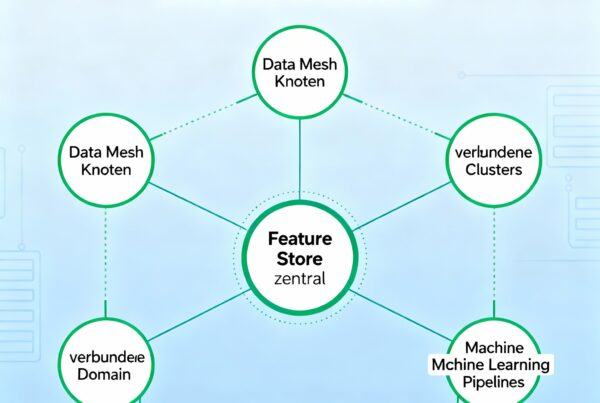Edward de Bono in his book, “The Use of Lateral Thinking” defined Lateral thinking as opposed to vertical thinking, which is classical thought, characterized by continuity between the steps and the validation step and assumptions of each intermediate result. In vertical thinking, an idea whose applicability is not validated is rejected and is no longer considered in the rest of the process. The invalidation of an idea in vertical thinking is conventionally done through the following objections:
- if it were true, it’s so simple that we would have found it before
- it’s not a new idea
- it cannot work
- it is not like that
- it’s too expensive
- it’s unrealistic
- it’s stupid
On the contrary, “lateral thinking” helps innovation by considering that the imagination of an impossible or impractical solution can serve as a stage for the discovery of a potentially innovative possible solution. The possibly illogical steps then serve as a “stepping stone” to other ideas, themselves realizable or not, until a valid solution is reached. The basis of lateral thinking is thus to make “discontinuous jumps,” possibly in the realm of the impossible, often illogical, but always with a view to “change.” The solution provided appears a posteriori undeniably logical (this is naturally necessary for this solution to be considered valid).
Lateral thinking is a phrase coined by Dr. Edward de Bono as a counterpoint to conventional or vertical thinking. In contentional thinking, we go forward in a predictable, direct fashion. Lateral thinking involves coming at the problem from new directions – literally, from the side.
Discontinuities can be provoked in several ways, for example by inverting or exaggerating the problem, by considering practical solutions or analogies with issues coming from a very different domain, or by using random words as stimuli.
These thought techniques are therefore beneficial in creative processes and, especially in this digital age. Many large companies, both past, and present, have turned to this creativity specialist and are inspired by lateral thinking methods. Some of such companies include the IBM, Nokia, Siemens, Coca-Cola, Ericsson, 3M, etc.ompan
Lateral thinking in the era of digital transformation
The digital transformation is on everyone’s lips. The awareness across all sectors – but the implementation is still in its infancy.
In general, the topic of digitization is underestimated. After all, as many thinks, it’s not just about optimizing and improving processes with the help of new technologies. It’s more about a complete reset. Radical rethinking is necessary, creating entirely new concepts. Digitization must not be isolated but must be viewed holistically. Switching everything to “digital” is certainly not enough, but the meaningful connection between traditional methods and innovative ideas must succeed.
Many forms of lateral thinking can aid us to cope through the process of management in the digital age, and there are also different models for setting lateral goals. This research indicates that we can quickly start up with these simple techniques:
- Express the beliefs we can have in us about a problem:
these are the “main ways” that crisscross our brain. These pathways represent the pre-constructed personal or cultural patterns that our minds naturally use because they do not require much effort from them (e.g., “I take for granted that customers are often concerned about secure online purchase”). - Formulate and affirm a “provocation”:
The main benefit of this is to allow the thinker to affirm something that will find its reason for being a posteriori. The provocation can be so absurd that De Bono suggests that it be preceded by the abbreviation “PO” (Provocation Operation), to force our brain to accept it (e.g. “PO, the more secure an online platform, the more the customers are happy and confident to make purchases”). - Identify the benefits of this provocation concerning the initial problem:
(e.g., “online platforms that are secure and reminds customers that their transactions are relatively safe”). - Seek concrete solutions to exploit these benefits
(e.g., “Install set security add-ons that ensure the safety of users”).
Methodology and advice
If a facilitator wishes to use it as part of a creative session, it is recommended to prepare and present several examples, to familiarize the participants with the surprising aspects of the method (the “PO,” the discontinuous jumps).
By all implications, lateral thinking forces the brain to leave its “comfort zones” and pre-constructed patterns, and it quickly fatigues the participants. Therefore, it is better to use it when the participants are still fit.
Advantages
- Lateral thinking is particularly suitable for people who want to evolve in step-by-step creativity, and do not believe in brainstorming.
Precautions to take
- Lateral thinking involves mental gymnastics, which De Bono calls “movement,” which will facilitate discontinuous jumps between the real, the absurd, and the return to the real.
How to be more efficient?
Formulate the initial problematic
The effectiveness of lateral thinking rests firstly on the fact that the initial problem is formulated. This supposes to use specific tools of preliminary creativity (functional analysis, watch, ambiguous questions, etc.).
Dare provocative provocations
The provocation takes place via a technique called a fording stone. It consists of introducing distortions, exaggerating, or inverting some aspects of the initial paradigm.
It will be all the more effective if it calls into question the foundations of the system or the approach in question. The provocation will often appear, at first, as fanciful, sometimes unrealistic and even transgressive. In any case, it does not seem acceptable a priori. It is a kind of experimentation that we do in thought, to make us deviate from the main path.
Stay in motion
The challenge will be to make this “parenthesis of madness” realistic and acceptable a posteriori. This is the purpose of the “movement,” this mechanism of discontinuous jumps that aim to go back to the starting point, to the main track, opening the road to a new idea.
To the extent that our brain has difficulty leaving its comfort zones, it is likely to return quickly to the main, rational path without having gleaned original ideas in passing. This is why you often have to go over several times to find new ideas.
Validate provocation a posteriori
It is essential to ensure that the ideas we have found in our movement phase allow us to endorse the initial provocation. On the one hand, it is a way to make these ideas even more robust, and on the other hand, it is a key to “unlocking” our brain by showing that the sideways are just as acceptable as the main channels. Choose provocation. Agree to fumble during discontinuous jumps. Force yourself to return to reality and find workable solutions.




